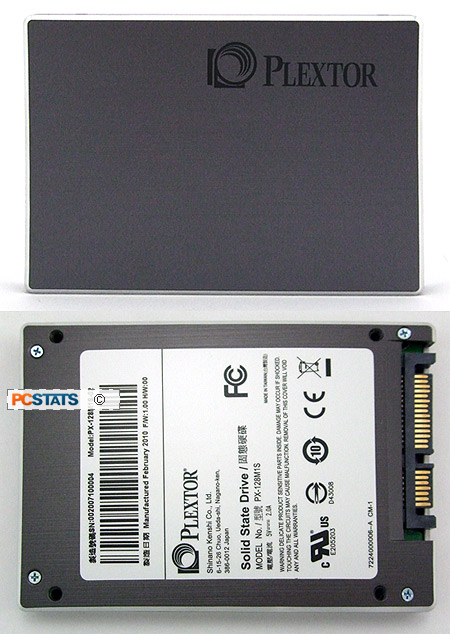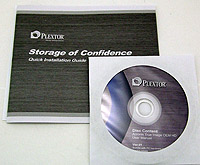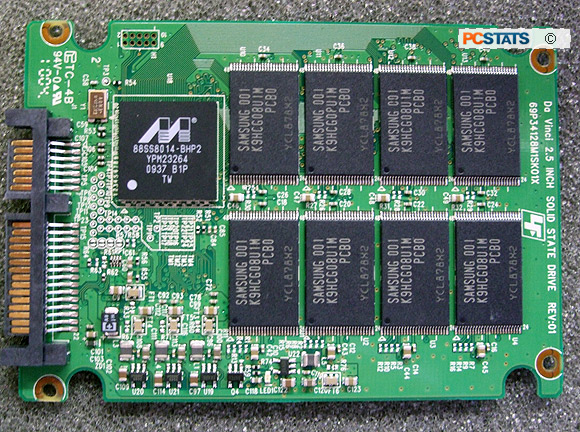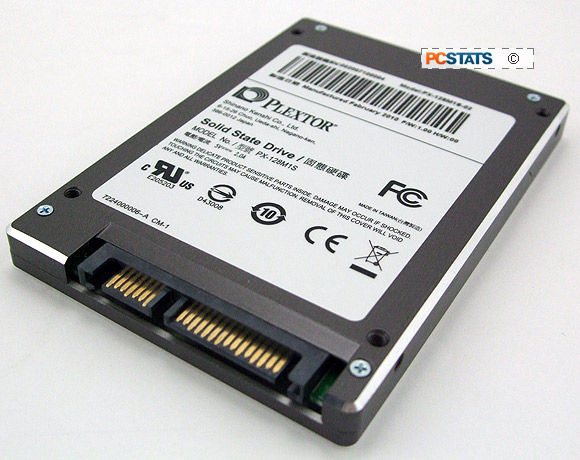Conventional rotational hard drives have been stuck
at the same 7200RPM speeds for years now, lagging behind and bottle necking the
performance of your CPU, RAM and chipset. If you're still using a mechanical
hard disk drive, pull out a stopwatch the next time you boot up Windows...
Listen to that chattering noise as the disks read/write heads slog across
platters of data, struggling to do the thousands of IO operations necessary to
boot up. While you sit around waiting for your PC to respond, consider that
an SSD can fix this problem. Solid State Drives
can noticeably improve overall computer system responsiveness and load
times.
Moving from a dual-core to a quad-core processor
won't make much of a difference when you're just surfing the web, and upgrading
to a faster videocard won't make a big difference outside of 3D games, having a
faster disk drive is something you'll notice all the time. Even simple things
like opening up windows in Explorer can be sped up if Windows is
running of an SSD.
Plextor, best known for manufacturing optical drives, has
finally stepped into the SSD market with the PX-128M1S, a 128GB drive that uses
multilevel cell (MLC) NAND flash memory. The PX-128M1S is a 2.5", SATA 3Gb/s
drive, which makes it compatible with most notebooks. It can also be installed
into a desktop computer with use of a mounting bracket (not included). Retailing
for around $430 CDN ($380 USD, £250 GBP), the
Plextor PX-128M1S is definitely an investment - after all the price GB is $3.35
compared to a 2TB HDD which runs around $0.16GB. Although SSDs are an
investment to consider carefully, even value oriented computers and netbooks
can reap the benefits of the extra speed solid state memory imparts.
With a
capacity of 128GB, the Plextor PX-128M1S is
well-suited as a boot drive. Unlike 64GB drives which can be a little tight
in that regard, you'll have enough space to install Windows,
everyday applications like Microsoft Office or Adobe Photoshop CS4
- all of which will see a nice boost in performance thanks to lower
latencies.
Large collections of media files like MP3s, JPEG
photos and DVD rips should be stored on larger, less expensive conventional
hard drives. Since SSDs have no moving parts, the Plextor PX-128M1S also draws
far less power than a conventional hard drive, 0.75W power draw while reading
and writing and 0.25W draw while idle.
 |
|
|
Plextor PX-128M1S 128GB Solid State
Drive |
|
|
 |
| Tech
Specs: |
|
Capacity: 128GB
NAND Flash: MLC
Cache:
64MB
Controller: Marvell 88SS8014-BHP2
TRIM:
Unknown
Garbage collection:
Yes
Wear levelling:
Yes
Interface: SATA II 3Gb/s
Formfactor: 2.5"
Cost: $430 CDN |
|
Package: |
|

Includes: Plextor PX-128M1S
Solid state drive, Manual, Acronis True Image storage software
| | |
Plextor's PX-128M1S claims a 130MB/s sequential
read speed and 80MB/s sequential write speed. This is about average for SSDs.
Sequential read and write speeds are important for transferring or copying large
files to different locations on the SSD. Random read and write speeds determine
how fast the SSD can boot into Windows (for example) or load up programs.
Plextor rate the PX-128M1S at 4300 I/O operations per second (IOPS) while
reading, and 1800 IOPS while writing. PCSTATS will be examining the PX-128M1S's
sequential and random I/O performance in these situations a little later in this
review.
The onboard controller is what makes or breaks an
SSD, it's responsible for balancing bandwidth, latency and reliability.
Early SSDs were plagued with poorly made controllers that resulted in
intermittent stuttering, where the entire computer system could stall for
2-3 seconds if the controller became overloaded.
Controllers from the likes of Indilinx and
Intel resolved most of these teething problems, and most SSDs now
deliver smooth, stutter-free performance. Plextor's PX-128M1S SSD is built
around a Marvell 88SS8014-BHP2 'Da Vinci' controller, a relative newcomer to the
SSD realm. Marvell's 'Da Vinci' controller has a built-in wear-leveling
algorithm, which distributes write operations across the Plextor PX-128M1S's NAND
flash memory. This feature prevents any one flash cell from being written
to and worn down more than the others (flash cells are capable of a finite
number of reads and writes) extending the life of the drive. The drive also
includes standard S.M.A.R.T. diagnostic tools, which will indicate when the
SSD is reaching the end of its lifespan so you'll know when to backup your data.
The lifespan of this SSD is rated for 26,000 hours
continuous use.

The Marvell 'Da Vinci' controller also has
something called native 'garbage collection'. Typically this comes in the
form of TRIM support, which enables the operating system to communicate
with the SSD controller. TRIM allows the controller to safely and quickly
overwrite data blocks that have been flagged for deletion, rather than going
through the slower process of reading them into memory, checking and modifying
the data, and writing it back to flash memory.
Marvell has not published much information about
the 'Da Vinci' controller, so we're not sure if it supports TRIM or
not. You should note that TRIM is only supported by Windows 7, Windows
Server 2008 R2, and the latest versions of Linux (2.6.33).

Like most SSDs, the PX-128M1S has support for Native Command Queuing (NCQ)
and the Advanced Host Controller Interface (AHCI), which should be enabled for
maximum performance. Note that if you are turning AHCI on you'll want to do it
with a fresh install of Windows, otherwise your computer may hang or crash while
booting. AHCI and NCQ are supported by most motherboards manufactured from
around 2005 and onwards, and it's natively supported in Windows Vista and
Windows 7. Make sure to check your hardware and OS configuration before you
buy!
A 3-year warranty backs up the PX-128M1S SSD, and
Plextor claim it will hold up to at least 26,000 hours of sustained
use. The manufacturer bundles in a copy of Acronic's True Image software,
which is a decent application for disk cloning and running data
backups. Now, let's get this SSD on the PCSTATS test bench and
find out how it stacks up!

